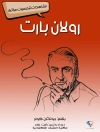Anthology from the year 2024 in the subject English Language and Literature Studies – Literature, , language: English, abstract: This anthology contains six term papers. The first paper deals with Jean-Jacques Rousseau’s concept of the “noble savage“ and the use of this concept by Mary Shelley as a main theme in her famous novel ‘Frankenstein’.
In academia, 15 years can see a variety of interpretations of even the most famous scholarly novels. In the second text, witness the best academia has debating the gender and sexual orientation of Dr. Victor Frankenstein, along with his motives and feelings.
The third paper shall examine the way in which Mary Shelley creates an atmosphere of terror in her novel. Therefore both the preface of the 1818 version of Frankenstein, written by Percy B. Shelley, as well as the 1831 introduction by Mary Shelley shall be analyzed on the author’s original intention and the idea behind Frankenstein.
The transgression of limits is a central theme of the novels by Dostoyevsky and Shelley. The stories examine the world of thought and action of two characters feeling trapped within certain limits and trying to break through them, while in their failures other limitations manifest themselves. That’s the topic of the fourth text.
Based on the thesis, that the works of James Whale and Richard Brinsely Peake use comic relief in various ways and differ amongst each other, the fifth paper attempts to investigate in which way, respectively to what extent “Presumption” and “The bride of Frankenstein” adapt Shelley’s novel whereby the emphasis will be on the incidence of comic relief and the impact of using such a rhetorical device.
The last paper answers questions like: What is Shelley’s style of writing? Which elements does the novel Frankenstein consist of, and what makes it differ from other Gothic novels? The paper’s aim is to answer these questions and to give information about the question: Is Frankenstein a typical Gothic novel?
İçerik tablosu
The Monster in Frankenstein with Regard to Rousseau’s Concept of the “Noble Savage” (2011)
1. Introduction
2. Rousseau’s Concept of a “Noble Savage”
2.1 Opposite Theory: Thomas Hobbes
3. Frankenstein’s Monster as a “Noble Savage”
3.1 Arguments for Frankenstein’s Monster as a “Noble Savage”
3.2 The Monster’s Transition from a “Noble Savage” into a Murderer
3.3 Reference to Paradise Lost by John Milton
4. Conclusion
List of Sources
Précis Critiques of Mary Shelley's Frankenstein. Was Victor Frankenstein a woman? And other post-modern literary disputes (2012)
Critique one
Critique Two
Critique Three
Critique Four
Critique Five
Works Cited
The Creation of Terror in Mary Shelley’s „Frankenstein“ (2011)
1. Introduction
2. Frankenstein as Gothic story
3. Terror
3.1 The Term „Terror“
4. Sublime and Obscurity
4.1 Edmund Burke on the sublime
4.2 Obscurity
5. Terror in Frankenstein
5.1 Terror within the Story Itself
5.2 Terror achieved through other Features
6. Conclusion
Bibliography
The Significance of Limits. The Parallels between Dostoyevsky's ‘Crime and Punishment’ and Shelley's ‘Frankenstein’ (2018)
1. Introduction
2. Limits for the Profane Mind
2.1 Empathy and Morality
2.2 Sexuality and Mortality
3. Overcoming Limits: Self-Absolutizing
3.1 Reason and Ethics
3.2 Science and Spirit
4. Limits in a Secular World
4.1 Materiality and Immorality
4.2 Self-Containment and Death
5. Overcoming Limits: Transformation through the Other
5.1 Image and Language
5.2 Dialogue and Grace
6. Conclusion: Transcendence in-and-beyond the Embodied
Bibliography
The function of comic relief in stage adaptations of Mary Shelley’s ‘Frankenstein’ (2019)
1. Introduction
2. Comic relief in stage adaptations of Frankenstein
2.1 A brief definition of comic relief
2.2 Primary works and their way of adapting Frankenstein
2.3 Comic relief in Frankenstein adaptations
2.4 Comparison of “Presumption” and “The bride of Frankenstein”
3. Conclusion
Works Cited
Is Mary Shelley's ‘Frankenstein’ a typical Gothic Novel? Context and Themes in ‘The Modern Prometheus’ (2022)
1. Introduction
2. Context
2.1. Information about Mary Shelley
2.2 The Gothic genre
3. Gothic themes in Frankenstein
3.1 Horror and monstrosity
3.2 Similarity of Victor and the monster
3.3 Sexuality and incest
3.4 Narrative style
4. Conclusion
Works Cited












